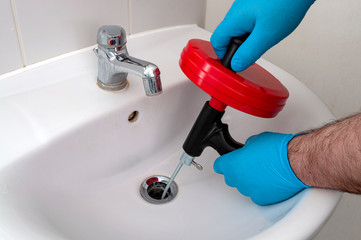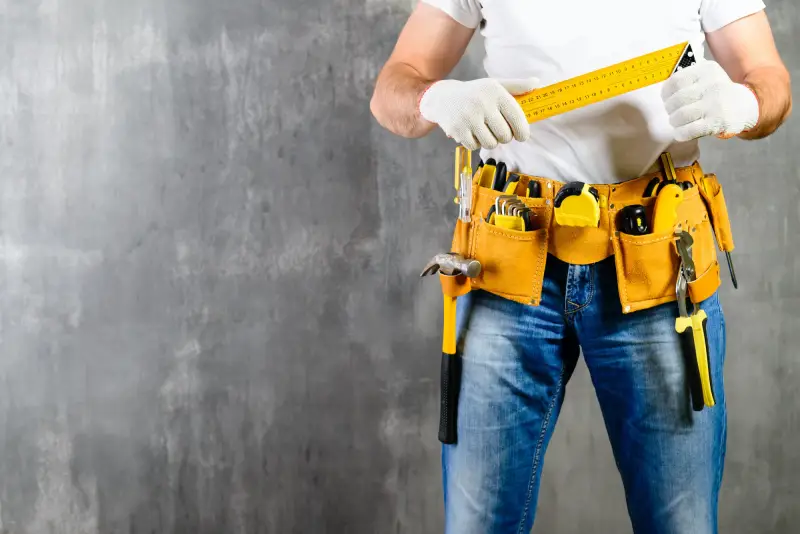Drain Cleaning Los Angeles is essential to prevent the build-up of organic materials that can cause clogs in your pipes and draining appliances. Most clogs are caused by food particles, hair, soap scum, and other debris that builds up over time. Keeping your drains clean can help you avoid costly repairs in the future. However, when these tips don’t work you may need to call a plumber for professional drain cleaning.
Chemical drain cleaners are readily available in liquid, gel or powder form and are often used by homeowners to remove severe clogs. These products use chemicals like acids, bases or oxidizers to react with the material that is causing the blockage and break it down to clear the line. They are effective against hair, grease and paper debris but may not be able to dissolve more solid obstructions. They also may harm pipes if the reaction is too strong or they are used too frequently.
Most chemical drain cleaners create heat during the chemical reaction, and the higher temperatures can melt or warp plastic pipes. They can also corrode metal pipes over time if they are exposed to the cleaners for extended periods of time. These chemical cleaners are not safe for septic systems and can kill the bacteria that keep a drain healthy.
Some of these products are caustic and can damage skin, eyes and mucous membranes if they come into contact with them. They may also release hazardous fumes if the product is mixed with other substances or used in poorly ventilated areas. It is important to read the label carefully and follow the instructions for use. Wearing gloves, safety goggles and a face mask can help minimize the risk of exposure.
If you choose to use chemical drain cleaners, it is best to try to remove as much of the clog yourself as possible beforehand. For example, if you have a large amount of grease that has congealed into a hard mass, you might be able to manually scrape some of it off with an old pair of pantyhose or a wire brush. If you cannot remove the clog yourself, it is best to call a plumber. He or she will be able to use professional-grade chemical drain cleaners that are safer for your pipes and the environment than household chemical cleaners.
Baking Soda and Vinegar
Clogged drains can be frustrating. Luckily, there are several DIY hacks that use pantry staples to quickly and easily clear a drain. These natural cleaners are also less expensive than commercially available clog removers. However, they should not be used as a substitute for removing the root cause of the clog. Using the wrong type of cleaning solution can actually damage the pipes. This is why it’s important to use other methods for removing stubborn clogs, such as a plunger or a snake.
Vinegar and baking soda are commonly used household items that can be used to create a chemical reaction that breaks up and dissolves buildup. This combination can help to clear away food particles, grease, and other debris that can lead to a clogged drain or garbage disposal. The fizzing action of the combination can also help to remove odors from the drain.
The problem is that using baking soda and vinegar as a drain cleaner can be harmful to your pipes. The chemical reaction that occurs between these two ingredients can eat away at the rubber and plastic materials that make up your drain pipes, leading to cracks and leaks. This can be particularly harmful if you have older, galvanized pipe that has not been well-maintained.
Before attempting to use the baking soda and vinegar method, make sure that you have removed any visible hair or other blockages from the drain cover and that the trap is empty. Then, pour one cup of baking soda down the clogged drain followed by one cup of vinegar. Plug the drain and let it sit overnight if possible. In the morning, flush the drain with a pot of hot water.
If you are not able to unclog your drain using this method, it is best to consult a professional for further assistance. A plumber can thoroughly inspect your plumbing and determine the root cause of the clog and recommend the appropriate solution. They can also advise on how to keep your drains clean, so that they do not clog in the future.
Dish Soap
A little dish soap can go a long way toward cleaning your drains and keeping them clear. It’s also one of the mildest products in the supermarket household cleaning aisle and can be used as a substitute for many other products. Dish soap can be used to wash dishes, as a laundry stain remover, in the kitchen as a grease cutter, and in the bathroom for hair-related clogs.
There are a number of brands of eco-friendly dish soap to choose from. Look for a product that is biodegradable, phosphate-free and made from natural or plant-based ingredients. Many dish soaps are available in sustainable packaging options including refillable bottles and pouches to reduce plastic waste. Many are also free from added fragrances, which is ideal for sensitive skin.
Pour a few tablespoons of liquid dish soap down the drain and let it sit for a few minutes to give it time to work on the clog. Then, flush the drain with hot water. This method is effective for minor clogs caused by grease or soap buildup and can be used frequently to prevent future blockages.
If you are unable to unclog the drain using this method, try a mixture of baking soda and vinegar. The chemical reaction between these two products can break up and dissolve a variety of different types of clogs, especially those related to hair.
For stubborn clogs, use a plunger to loosen the obstruction. Avoid using chemical drain cleaners as these can be dangerous to pipes and are often ineffective. Chemicals can damage your pipes and cause them to corrode or leak, particularly older PVC pipes or ones made from galvanized steel. They can also create toxic fumes that are hazardous to your health and can irritate your eyes, nose and throat.
If you are looking for a dish soap that does its job well and is good for your pipes, we recommend L’Avant Collective’s eco-friendly, skin-safe product with a light lavender scent. We love the eye-catching bottle and the fact that it can be refilled to reduce plastic waste. We’ve also tried ECOS Dishmate, which has a pleasant carrot-top smell but was disappointing in its performance (it didn’t cut grease well) and its price. The Thrive Market version was more perfumed than we like but was less expensive and works well.
Sewer Line Issues
While at-home drain cleaners can sometimes help clear up a blockage in a specific fixture, they don’t typically address issues with the sewer line itself. If you have a clogged sewer line, it’s always best to call in professional plumbers who can use high-powered water jets (also known as hydro-jetting) to clear out the debris and restore proper flow.
Often, a clogged sewer line is caused by grease and soap residue that builds up over time. These substances can cause the pipe to become brittle and develop cracks, which then allow waste to leak into the surrounding ground.
Another common problem is tree root intrusion. Because trees are naturally drawn to moisture, their roots can infiltrate and obstruct water pipes and other drains buried underground. Over time, this can cause serious and costly damage.
Other signs that your home’s drain lines are in trouble include a noticeable foul smell. A backed up sewage pipe often smells like rotting organic material, which can be extremely unpleasant to come in contact with.
Leaking drain lines can also create ideal conditions for the growth of mold and mildew, which can then spread throughout the house. As a result, it’s important to look for early warning signs and call in professional plumbers for drain cleaning as soon as possible.
In some cases, a broken sewer line can actually create a sewage backup inside the home itself. This is usually an emergency situation that needs to be dealt with immediately, as it can cause severe health problems for family members and pets.
If you suspect that your sewer line is clogged, it’s always best to call a professional plumber for assistance. They can use a plumbing auger to break up and remove the clog, and they can also perform a video inspection to see if there is any structural damage that needs to be addressed.
Remember that there is no do-it-yourself way to fix a main sewer line clog, as these lines are buried deep underground and require special equipment to access. However, if you notice the early warning signs and act quickly, you may be able to avoid more serious and expensive repairs.
